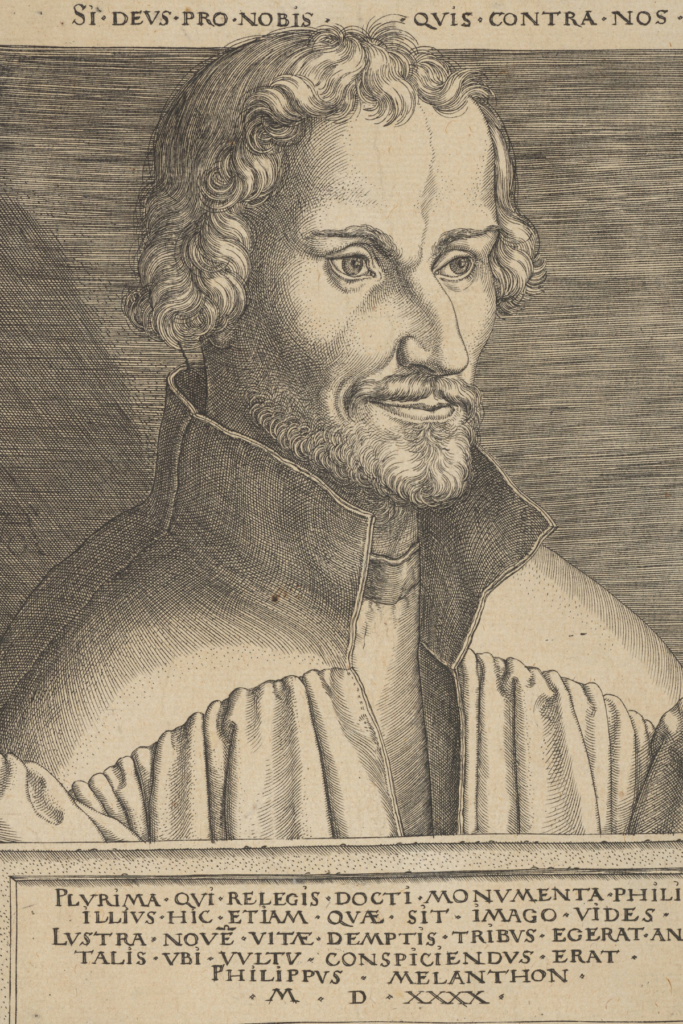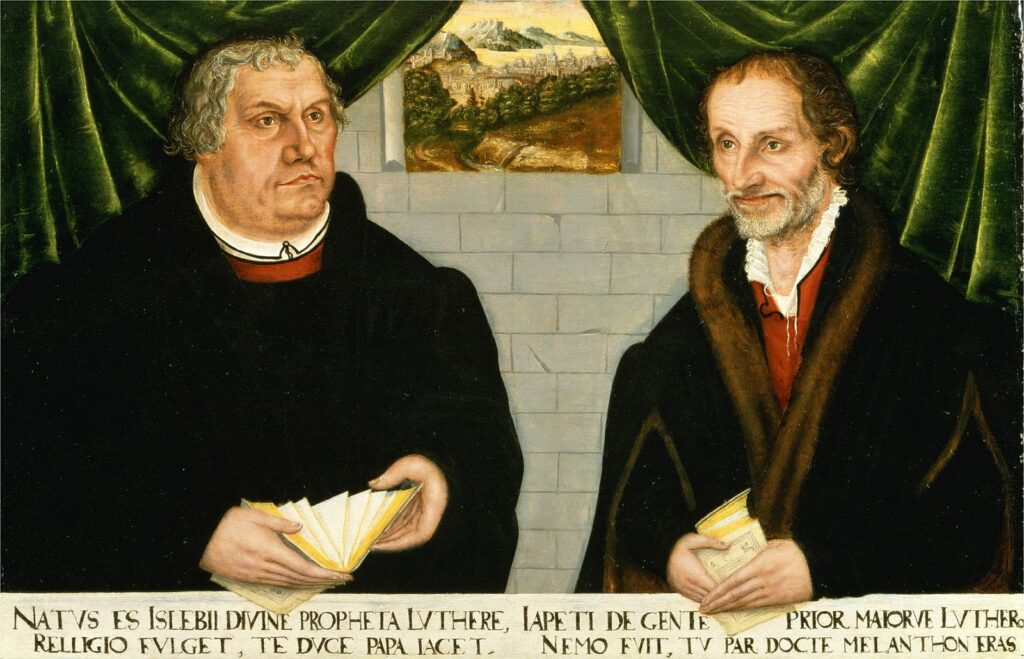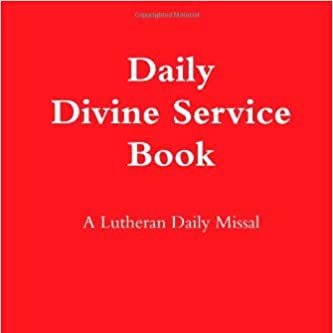The Great Lutheran Confessor

With just one day separating them in the Lutheran commemorative calendar, St. Philip Melanchthon and his day on February 16th lies in close proximity to St. Martin Luther’s day on February 18th, very apropos considering the friendship of these two reformers.
Commemorated on his birthday, Philip Melanchthon was born near Bretten, Germany, on February 16, 1497. Orphaned at age 10, Melanchthon dove headfirst into his studies, entering the University of Heidelberg at age 12 and graduating in just two years with his bachelor’s degree. From there he went on to Tübingen for his masters degree and, at a mere 21 years old, was appointed to a professorship at Wittenberg by Frederick the Wise. He was set to be a professor of Greek as well as mathematics, astronomy, and astrology. He was thought of highly among many within the German intellectual world, including the famous humanist Erasmus of Rotterdam. On August 28, 1518, he delivered his inaugural address, which also won him the attention of Luther, as he spoke about university reform and a new system of teaching.
Luther had at this point already posted his 95 theses and was making quite a name for himself teaching at the University of Wittenberg, as well. Due to this, it seems as though Melanchthon appeared on the Wittenberg scene at precisely the right time, convinced of the Reformation’s teachings and ready to use his intellectual prowess to debate its issues. With Luther’s friendship and encouragement, Melanchthon started teaching theology and Scripture in addition to his classics courses and began to officially represent the Reformation movement on multiple occasions.
Perhaps most notable is when, in April 1530, Emperor Charles V called an official meeting between those steeped in the Reformation and those subject to the Roman obedience. Since Luther was under papal excommunication and an imperial ban, Melanchthon went in his stead and addressed the issues where he felt that the Romanists had steered too far away from Scripture. The statement became known as the Augsburg Confession, presented to the emperor on June 25, 1530, standing as a defining document for the Lutheran Church.
Beside his prominent position in the Reformation, Melanchthon continued on as a fixture of the University of Wittenberg. He eventually married Katharina Krapp, and they had four children. He died on April 19, 1560, in the study of his house and is buried next to his faithful companion Martin Luther in the Castle Church.
A Brief History
Even with Melanchthon’s great influence on the trajectory of early Lutheranism, his remarkable academic career, and his close friendship with Martin Luther, the saint died with somewhat of a tarnished reputation. Yes, he had been Luther’s closest companion; however, other Reformers were deeply suspicious of him and considered him a traitor in part because of his generally irenic personality and attempts to seek compromise with Emperor Charles V later in life. Like many of the figures of the Reformation, Melanchthon can be summarized as a complex character.

Even so, Melancthon was certainly Luther’s right-hand man, executing many of the practical tasks of the Reformation’s growth and clearly articulating its tenets to students, colleagues, and other priests. He and Luther worked together seamlessly with no public friction during their time together on earth. It was Melacthon who was essential to young students’ learning of how to preach and to teach, the promotion of conveying the faith through proclamation, and the importance of Biblical studies. He mastered Greek and Hebrew early on in his career and thus was able to give lectures on Scripture with astute knowledge, breadth, and depth. His leadership made Wittenberg an incredibly famous university across the world, and he, in turn, was given the title of Præceptor Germaniæ or Teacher of Germany.
For Melanchthon, salvation by grace alone through faith alone as determined by the standard of Scripture alone was the center of all, seen clearly across his Loci Communes, the Augsburg Confession, and the Apology of the Augsburg Confession. In fact, to this day Lutheran pastors in the LCMS must vow to teach and preach according to The Book of Concord (of which the Augsburg Confession is the center) upon ordination , understanding that it correctly teaches and confesses the Biblical faith. Therefore, we thank God for St. Philip Melanchthon, the writer of the Augsburg Confession who has formed the words of our confession for us and who articulated so well much of the Lutheran faith.
Collect
O God, Who didst gladden us by the annual feast of Blessed Philip, Thy Confessor: mercifully grant that we may imitate his example, whose heavenly birthday we celebrate; through Jesus Christ, Thy Son, our Lord, who liveth and reigneth with Thee and the Holy Ghost: ever one God, world without end. Amen.

Lessons
Epistle
Gospel
Resources
Issues, Etc. interview with the Rev. Dr. Ken Schurb on Luther’s Inner Circle: Philip Melanchthon
Issues, Etc. interview with the Rev. Dr. Ken Schurb on Sixteenth Century Reformer Philip Melanchthon
Propers found in Daily Divine Service Book: A Lutheran Daily Missal, edited by the Rev. Heath Curtis
References:
1. Weedon, William. Celebrating the Saints. Concordia Publishing House. 2016.
2. Kolb, Robert. “Philip Melanchthon: Confessor of the Faith.”
Images:
1. Philip Melanchthon, Heinrich Aldegrever, Germany, 1540.
2. Portrait of Philip Melanchthon, Lucas Cranach the Elder, Germany, 1537.
3. Double portrait of Martin Luther and Philipp Melanchthon, Lucas Cranach the Younger, Germany, ca. 16th century.



